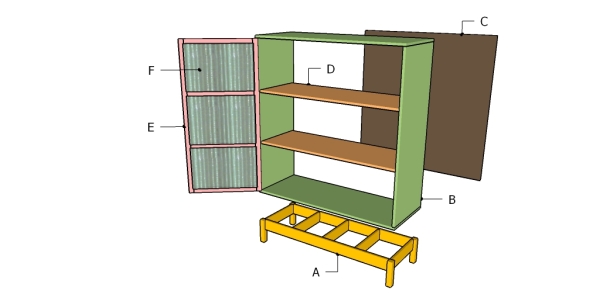This step by step diy woodworking project is about pantry cabinet plans. If you want to learn more about building a medium-sized pantry cabinet with a classy look, we recommend you to take a look over the instructions described in the article. Work with good judgement and don’t forget to take a look over the rest of the related plans, as there are many designs and woodworking projects to select from.
Work with attention and don’t forget that a good planning will save you from many issues and it will keep the costs withing the total budget. Invest in high quality materials, such as pine, redwood or cedar. Drill pocket holes before inserting the galvanized screws, to prevent the wood from splitting. Add waterproof glue t the joints, in order to enhance the rigidity of the structure. See all my Premium Plans HERE.
Projects made from these plans
Pantry Cabinet Plans
Cut & Shopping Lists
- A – 4 pieces of 2×2 lumber – 8″ long, 2 pieces of 1×4 lumber – 45″ long, 5 pieces – 15″ long BASE
- B – 2 pieces of 3/4″ plywood – 18″ x 48″ long, 2 pieces – 18″ x 48 1/2″ long FRAME
- C – 1 piece of 3/4″ plywood – 46 1/2″ x 48 1/2″ long BACK
- D – 2 pieces of 3/4″ plywood – 16 1/2″ x 46 1/2″ long, 4 pieces of 1×1 lumber – 46 1/2″ long SHELVES
- E – 2 piece of 1×2 lumber – 48 1/4″ long, 4 pieces – 20 1/8″ long 2xDOOR
- F – 1 piece of 1/4″ glass – 14 1/4″x20 1/2″ long, 1 piece – 15 3/8″x20 1/2″ long, 1 piece – 13 3/4″x20 1/2″ long 2xPANELS
- 1 piece of 2×2 lumber – 4 ft
- 2 pieces of 1×4 lumber – 8 ft
- 1 piece of 3/4″ plywood – 4’x8′
- 2 pieces of 1×1 lumber – 8 ft
- 4 pieces of 1×2 lumber – 8 ft
- 1 piece of 1/4″ glass – 4’x4′
- 2 1/2″ screws
- 1 1/4″ screws
- wood putty, wood stain
Tools
![]() Hammer, Tape measure, Framing square, Level
Hammer, Tape measure, Framing square, Level
![]() Miter saw, Drill machinery, Screwdriver, Sander
Miter saw, Drill machinery, Screwdriver, Sander
Time
![]() One day
One day
Related
Building a pantry cabinet
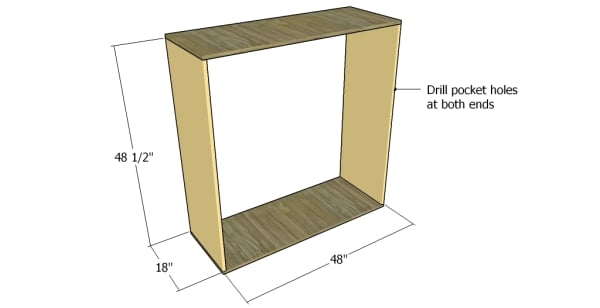
Building the frame of the cabin
The first step of the woodworking project is to build the frame of the pantry cabinet. In order to get a professional result cut the components out of 3/4″ hardwood plywood. Take accurate measurements before making the straight cuts.
Drill pocket holes at both ends of the sides, align the edges and insert 1 1/4″ screws into the horizontal components. Add glue to the joints and make sure the corners are square.
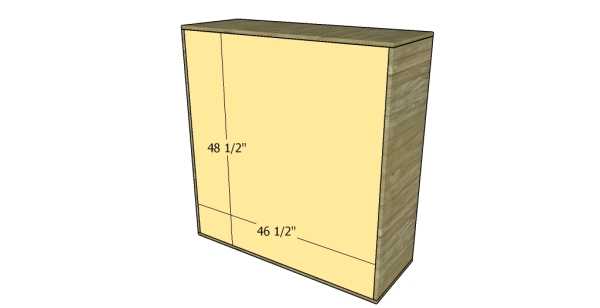
Fitting the back
After assembling the frame of the cabinet, we recommend you to fit the back to the structure. Cut the component at the right dimensions and drill pocket holes along the edges. Fit the plywood sheet to the frame, align the edges and insert 1 1/4″ screws. Add glue to the joints.
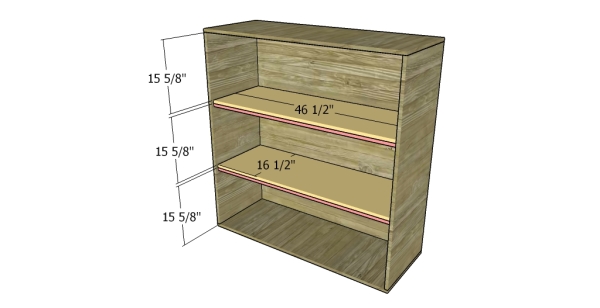
Fitting the shelves
Next, you have to fit the shelves to the pantry cabinet. In order to add strength to the shelves, we recommend you to fit 1×1 supports to the front and back of the shelves. Drill pilot holes at both ends of the supports and secure them to the shelves using finishing nails and glue.
Drill pocket holes along the sides of the shelves and secure them to the frame using screws. Use a spirit level to check if the shelves are horizontal.
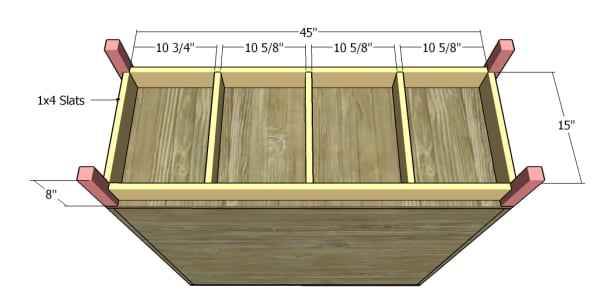
Building the base of the cabinet
Continue the project by attaching the base to the cabinet. As you can see in the diagram, we recommend you to build the legs out of 2×2 lumber and the supports out of 1×4 lumber. Drill pocket holes at both ends of the supports and secure them together using 1 1/4″ screws and glue.
Make sure the corners are square and leave no gaps between the components. Drill pocket holes through the supports and legs, before inserting 1 1/4″ screws into the bottom of the cabinet.
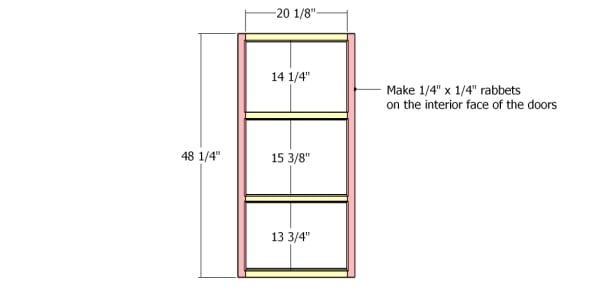
Building the door frames
Building the two doors for the cabinet is a straight forward process, but pay attention to several aspects. Build the components out of 1×2 lumber. Drill pocket holes at both ends of the horizontal components and secure them with 1 1/4″ screws and glue to the vertical supports.
Use a router to make 1/4″x1/4″ rabbets to the interior face of the door. Work with attention and leave no residues on the components.

Fitting the glass panels
Cut the glass panels at the right dimensions and secure them to the frame using several beads of silicone. Smooth the edges of the glass panels before fitting them into place and make sure the edges are flush.
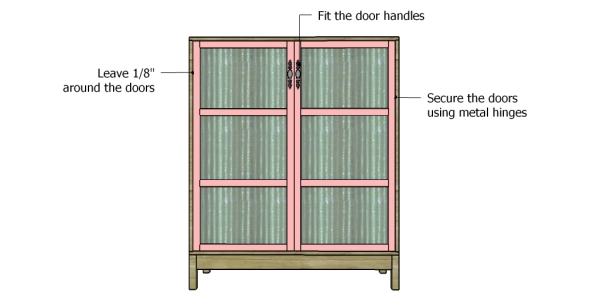
Fitting the doors
Fit the doors to the opening and secure them to the frame using metal hinges. Align the components with great care and leave 1/8″ around the edges. Fit appropriate handles to the doors and make sure they open and close easily.
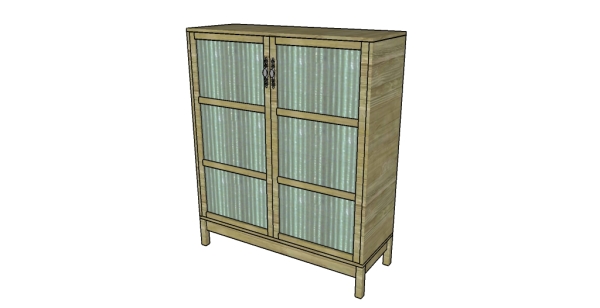
Pantry cabinet plans
One of the last steps of the woodworking project is to take care of the finishing touches. Therefore, fill the pilot holes with wood putty and smooth the surface with 120-grit sandpaper.
Top Tip: If you want to enhance the look of the woodworking project and to protect the cabinet from decay, we recommend you to cover the components with paint or stain. Place the pantry cabinet in a proper location and move it whenever necessary.
This woodworking project was about pantry cabinet plans. If you want to see more outdoor plans, we recommend you to check out the rest of our step by step projects. LIKE us on Facebook and Google + to be the first that gets out latest projects and to hep us keep adding free woodworking plans for you.

